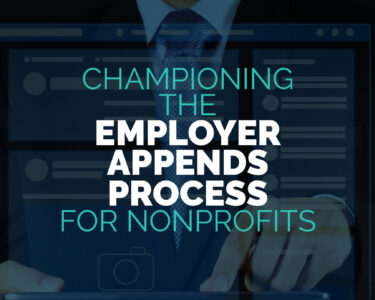In the evolving landscape of philanthropy, lean funders — those operating with few or no staff — are playing a crucial role in advancing racial equity. The latest edition of Racial Equity in Lean Foundations, an annual report from Exponent Philanthropy, sheds light on how these foundations are embarking on their equity journeys through extensive interviews with funders, nonprofits, and consultants. The report not only offers insight into what lean foundations are doing, but can offer lessons for all funders on practical steps and strategies to embed racial equity into their work.
Who Drives Equity Conversations?
A common question in the philanthropic sector is: Who drives racial equity work within a foundation? This question often arises from board or staff members eager to engage in equity work but unsure of how to get started. Our research reveals that equity conversations at lean foundations typically begin in one of three ways:
- Founder- or Donor-Driven Model
- Board-Driven Model
- Staff-Driven Model
Across all three models, one factor consistently emerges as critical: leadership. Foundation leaders must take responsibility for their own learning and growth in racial equity before they can effectively engage their boards, staff, and communities in these conversations. As Vicki Fernandez, director of Thriving Communities at the Grunin Foundation, aptly put it, “Change happens at the speed of trustees.”
The Founder- or Donor-Driven Model
In some foundations, the founder or primary donor takes the lead in advancing equity work. These individuals often have significant influence within their organizations, and when they choose to focus on racial equity, they can drive substantial change. For instance, Colleen O’Keefe, executive director of the Sauer Family Foundation in St. Paul, MN, shared that the foundation’s president and founder, Pat Sauer, has been the primary driver of equity conversations. O’Keefe emphasizes that her role is to implement these ideas sustainably, ensuring that racial equity is not a separate initiative but the lens through which all the foundation’s work is viewed.
In other cases, founders may begin the equity journey by recognizing gaps in their existing approach. Louise Davis, founder of the PRBB Foundation in Bozeman, MT, described how the foundation’s initial focus on gender equity expanded to include racial equity after learning that less than 0.25 percent of philanthropic dollars are awarded to Indigenous-led nonprofits. Davis’s commitment to engaging directly with Native and Indigenous-led nonprofits underscores the importance of listening to and learning from the communities foundations aim to support.
Some founders take the bold step of transitioning leadership to the community to better align with equity goals. The Tzedek Social Justice Fund, originally the Amy Mandel and Katina Rodis Fund, provides a powerful example. In 2020, the foundation was renamed and restructured to reflect its commitment to social justice, with its founder, Amy Mandel, stepping back from day-to-day leadership. This transition to a community-led board illustrates how founders can relinquish power to ensure that their foundations remain true to their equity principles.
The Board-Driven Model
When founders are no longer actively involved, board members often take up the mantle of advancing equity. In the board-driven model, equity work typically begins with one or more board members who have undergone diversity, equity, and inclusion (DEI) training or have engaged in racial equity work in other contexts. These board members bring their knowledge and passion into the foundation, initiating conversations and pushing for organizational change.
Creating an equity subcommittee within the board is one strategy that has proven effective. For example, the Morgan Family Foundation, which focuses on social equity, global warming, and end-of-life issues in St. Cloud, MN, established a social equity subcommittee. Over five months, the subcommittee engaged with the National Committee for Responsive Philanthropy’s Power Moves Curriculum to address power imbalances within the foundation and in their relationships with grantees. Executive Director Lori Kuhn likens racial equity work to maintaining healthy habits, emphasizing that it’s the consistent, day-to-day actions that drive lasting change.
Data-driven advocacy also plays a key role in the board-driven model. Melanie Matthews, executive director of the Cedarmere Foundation in Seattle, WA, recounted how early non-family board members used data and external speakers to highlight racial disparities in community services. This data-driven approach was instrumental in shifting the foundation’s focus toward racial equity, making it one of their core values.
The Staff-Driven Model
In lean foundations with paid staff, it is often the staff who initiate racial equity work. These individuals, typically executive directors or program officers, have a deep understanding of the foundation’s operations and the time to reflect on how equity can be integrated into their work. However, success in this model often depends on finding champions or allies on the board who can support and amplify these efforts.
The Hill-Snowdon Foundation in Washington, DC, exemplifies the staff-driven model. With a budget of less than $3 million, the foundation has a long history of supporting grassroots community organizing. Since hiring its first executive director, Nat Chioke Williams, in 2004, the foundation has developed policies from the ground up, asking themselves how they could best support social justice. Erin Morris, a program associate, noted that while the staff drove the process, strong board support was crucial, as both shared a commitment to the foundation’s social justice mission.
Data and research are also vital tools in the staff-driven model. The AJL Foundation’s evolution toward centering equity highlights how bringing data, outside experts, and community stories into the conversation can help staff make a compelling case for change. Kristi Petrie, the foundation’s co-executive director, explained how these elements helped the foundation acknowledge inequity and ultimately make a significant shift in its grantmaking and investment strategies.
Engaging the Board: Building Trust and Inclusion
Regardless of who drives the equity conversation, effectively engaging the board is crucial for making meaningful progress. Building trust between board members and staff allows for open, honest discussions about racial equity. Educational opportunities, such as workshops and seminars, help board members understand the importance of equity work and its impact on the foundation’s mission.
Including community members on the board and diversifying board composition are also essential steps in this process. Moving away from family-only boards and embracing term limits can bring new perspectives and foster a more inclusive decision-making environment.
The Four Phases of the Equity Journey
For many lean foundations, the racial equity journey unfolds in four distinct phases:
- Phase 1: Thinking About Equity: Foundations begin by exploring racial equity concepts and identifying potential blind spots within their practices.
- Phase 2: Making Policy Changes: Foundations start developing structures and policies that support their racial equity work, laying a solid groundwork for future efforts.
- Phase 3: Building Trust with Communities: Moving beyond formal policies, funders focus on establishing genuine connections and trust with the communities they serve.
- Phase 4: Sharing Power: In this final phase, foundations shift power and resources from the foundation itself to the community, ensuring those most affected by inequities have a voice in addressing them.
Embracing the Journey
Racial equity work is complex and often challenging, but it is essential for creating lasting, positive change. Foundations, regardless of size or resources, can make a significant impact by committing to this journey. As Jennifer Langton of the Tzedek Social Justice Fund highlights, embracing the unknown and pushing through discomfort is crucial. Mistakes are inevitable, but they offer valuable learning opportunities.
Lean funders are demonstrating that substantial progress is possible. By learning from their experiences and sharing their strategies, these foundations are paving the way for a more equitable philanthropic sector.
Brendan McCormick is associate director, research and publications at Exponent Philanthropy and Hannah Smith is manager, editorial and publications at Exponent Philanthropy. Find Brendan and Hannah on LinkedIn.
👇Follow more 👇
👉 bdphone.com
👉 ultraactivation.com
👉 trainingreferral.com
👉 shaplafood.com
👉 bangladeshi.help
👉 www.forexdhaka.com
👉 uncommunication.com
👉 ultra-sim.com
👉 forexdhaka.com
👉 ultrafxfund.com
👉 ultractivation.com
👉 bdphoneonline.com




